We Women: The Power of Photography
08/09/21
By continuing to use our site, you agree to our Privacy Policy and Terms of Use.

Highlighting 17 unique photographic projects from various corners of the country with community engagement at its core, led by women and gender nonconforming artists.
Exhibition on view through September 12, 2021, Empire Fulton Lawn in Brooklyn Bridge Park.
In the aftermath of the 2016 U.S. presidential elections and subsequent Women's Marches, a number of grassroots organizations were born out of a mutual frustration over the country's deep political divisions across issues of economics, race, gender, and beyond. We, Women is one of such organizations, dedicated to fostering action and dialogue through art.
We, Women was founded to amplify women's and gender-nonconforming voices during an era of divisiveness and distrust in politics. The project, presented by Photoville and Women Photograph, provides funding and mentorship to visual artists who combine photography with community engagement to reframe social and political issues.
This July, We, Women's first public outdoor traveling exhibition, "We, Women: The Power of We," launched with an exhibition in Brooklyn Bridge Park that will open later in the summer in Anchorage, Alaska, in partnership with the Anchorage Museum, and will subsequently be shown in Atlanta, Chicago, and New Orleans over the next year. The first exhibition highlights 17 impactful projects, which examine crucial issues on the minds of many Americans: immigration, education, climate change, race, motherhood and family, gun control, health care, religion, criminal justice reform, gentrification, sexual assault, and more.
The We, Women founders describe the exhibition: "We selected artists whose contributions all demonstrate that there is a potential for a different future for this country. These artists are all combining photography and community engagement as a way to maximize visibility and impact." The free and accessible public exhibition is made up of 380 feet of engaging imagery that will reach hundreds of thousands of people.
The work is displayed along construction fencing surrounding Empire Fulton Lawn directly under the Brooklyn Bridge in Brooklyn Bridge Park. The exhibition opened July 13 and will be on view through September 12. There will be a guided tour of the exhibition and related programs later in the summer. Please check the website for additional information.
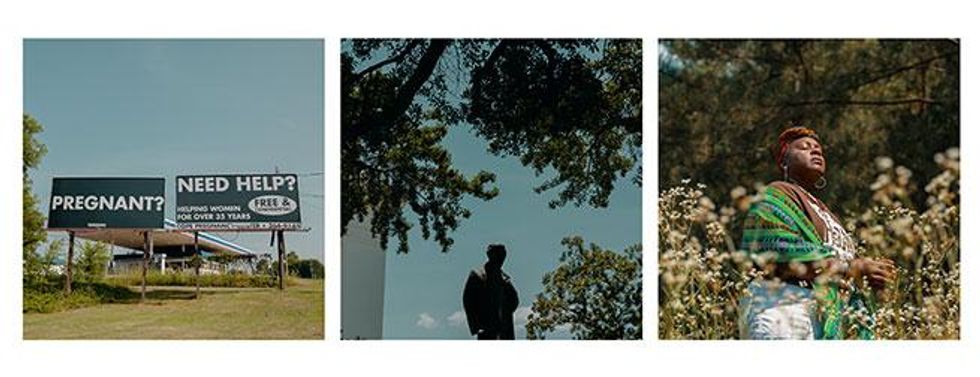
ABOUT THE PROJECT
I have spent a lot of time documenting reproductive rights, childbirth, and motherhood, often focusing on what it's like to be pregnant as a Black woman in the South. These images and stories offer an intimate portrait and counter narrative of a long-ignored, erased, and censored community. Three months before the COVID-19 pandemic shut down the U.S., forcing me to shelter in place, I found out I was pregnant, for the first time, with a girl. As I couldn't document other people's stories due to COVID-19, I was pushed to turn the camera on myself and document my own experience as a Black pregnant woman living through extraordinary circumstances.
ABOUT THE ARTIST
Bethany Mollenkof is a documentary photographer and filmmaker based in Los Angeles. Her work uses a thoughtful approach to tell complex stories about gender, culture, identity, and representation through an engaging, vibrant, and artistic process. Her essay and photo series, "Giving birth in a time of death: a love letter to my daughter," is part of National Geographic's ongoing COVID-19 Emergency Fund for Journalists. She is currently a visiting Neiman Fellow at Harvard, and her work has been published in The New York Times, Time, and National Geographic, among others.
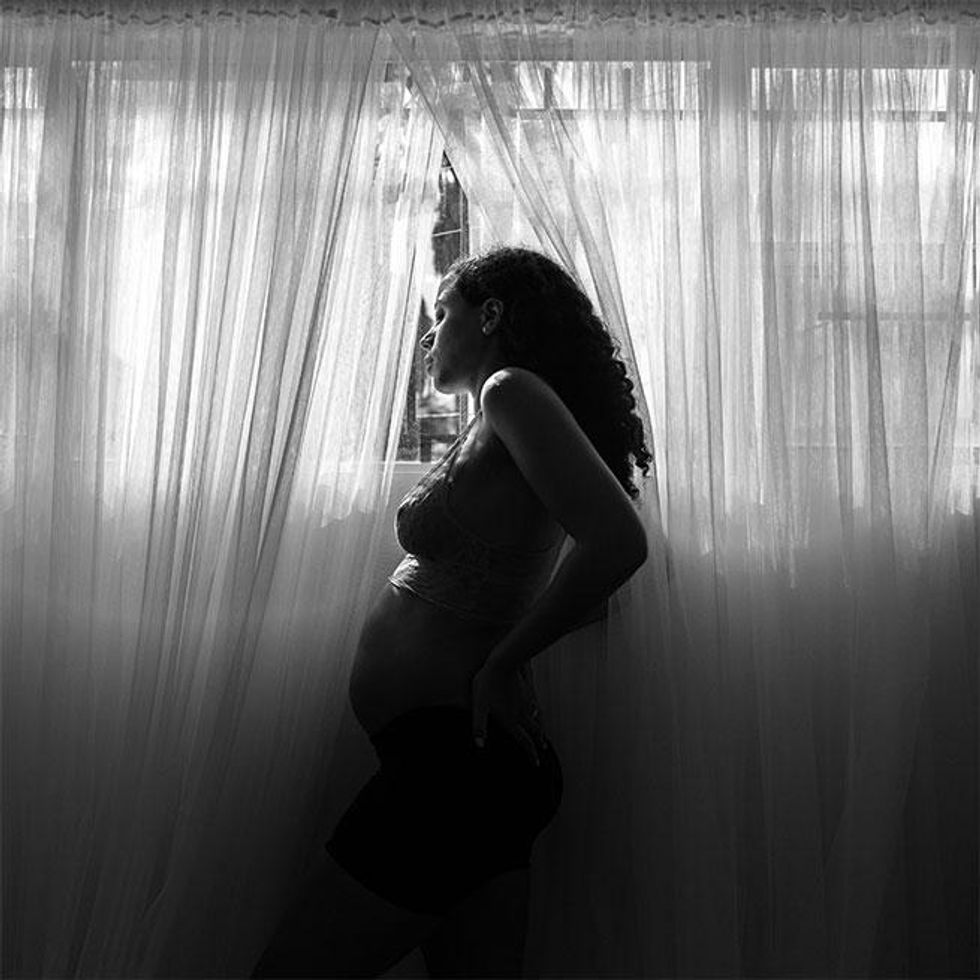

ABOUT THE PROJECT
The most concrete expression of anti-immigrant policy in the United States is found in the spaces where migrants are detained. Spaces of Detention is a collaborative project that examines how the infrastructure and the architecture in four ICE detention centers in upstate New Jersey shape social interactions and affect the well-being and mental health of migrants.
Through collecting autobiographical narratives, migrants who have been detained in these prisons tell their experiences through drawing, writing, and photo collages. These stories give an account of the "architecture of punishment," emphasizing the lack of access to proper nutrition, surveillance cameras as an expansion of torture, linguistic barriers, and incarceration of Indigenous Mesoamerican migrants -- all resulting in diverse forms of hetero-patriarchal violence and systemic abuse. This project strives to dismantle the narratives of trauma photography that commodify the pain of others and to provide space for healing and collective action.
ABOUT THE ARTIST
Cinthya Santos Briones is a Mexican photographer, anthropologist, ethnohistorian and community organizer based in New York. Her multimedia work uses a collaborative approach to tell stories about homeland, immigration, memory, identity and self-representation through an interdisciplinary process that uses photography, ethnography, history, drawings, and audiovisual and written narratives. Cinthya received grants from Magnum Foundation and National Geographic, and has published her work in The New York Times, California Sunday Magazine, and Vogue, among others.
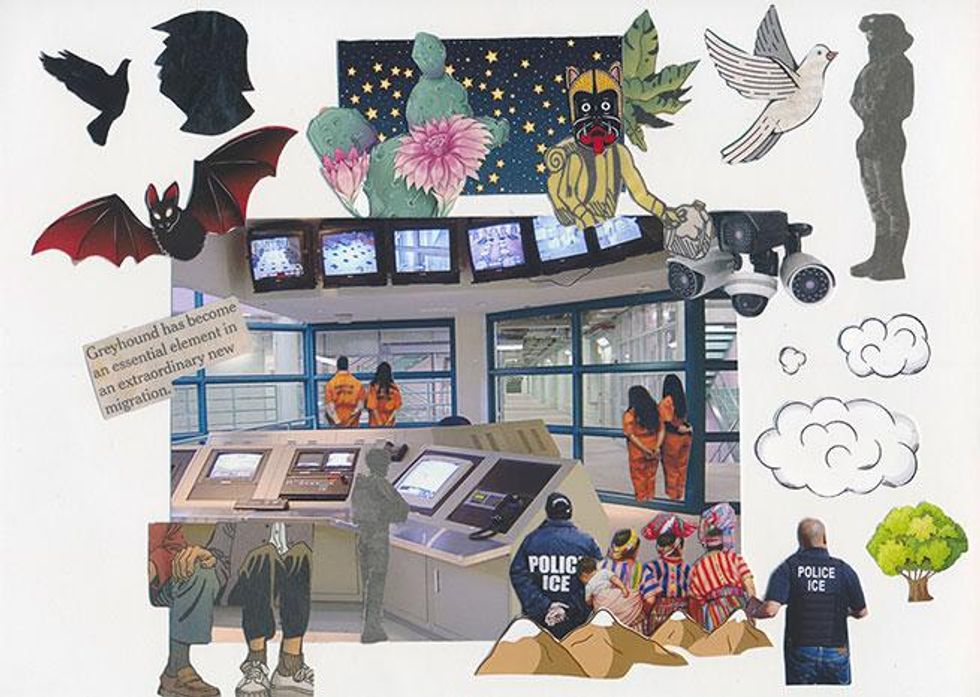
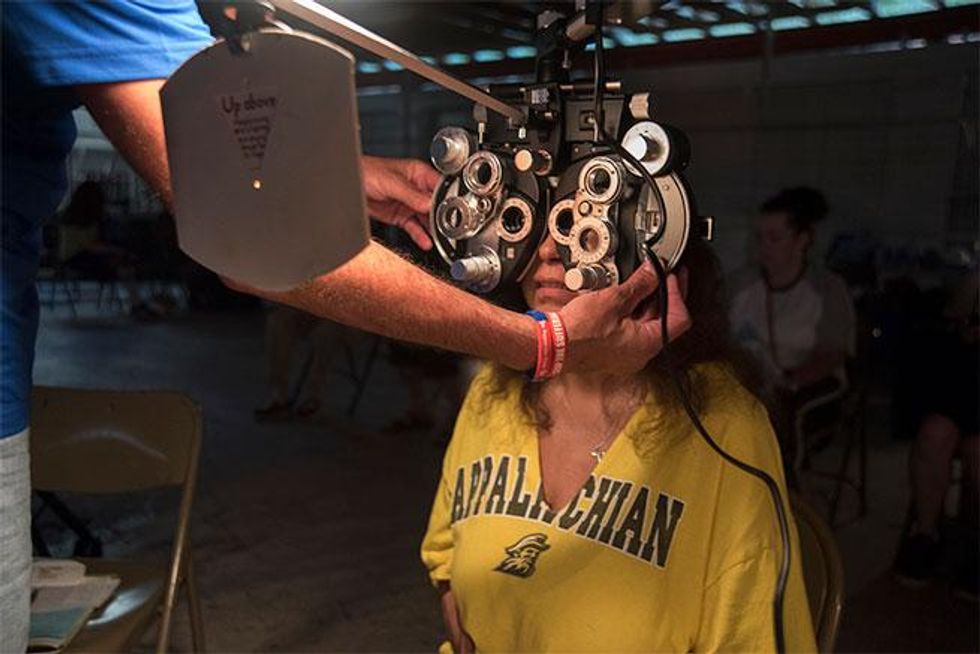
"There Ain't No Grave Gonna Hold My Body Down" visualizes resistance and activism associated with the failures of rural health care in Appalachia by providing context and resources for how citizens can work together to solve problems associated with declining rural health care. Utilizing pamphlets as a medium, Stacy is partnering with local health organizations to address problems associated with declining rural health care, specifically dental care, black lung disease, medical debt, drug use and treatment, and the impact of hospital closures. America's health care system is in crisis. Skyrocketing costs for patients, an accelerating work pace for nurses and other health care workers, and a tangle of private and public insurance bureaucracies throw up barriers to care for millions of people in the United States. At heart, what is strangling America's health care system is that we still don't count health care among the human rights to which we're all entitled. Instead, we view the health of our fellow citizens as another potential source of profit. The pamphlets are designed by Homie House Press, a radical cooperative platform that challenges the ever-changing forms of storytelling with imagery and text. All illustrations are by Jen Iskow. She is an artist, designer, and musician living in Tucker County, W.Va.
ABOUT THE ARTIST
Stacy Kranitz is an artist based in the eastern Tennessee Appalachian Mountains of the United States. Her work explores history, representation, and otherness within the documentary tradition. Poised between notions of what is right and what is wrong, she uses photography to open up narratives that confront our understanding of culture. Her work has been featured in Harper's Magazine, Mother Jones, The New York Times, Time, Oxford American, and Rolling Stone. In 2021, her first monograph of photographs, As it was Give(n) to Me, will be published by Twin Palms. She is also a 2020 Guggenheim fellow.


ABOUT THE PROJECT
Until I married a service member, I was largely unaware of U.S. military operations. I moved onto a military installation where troops train in simulated war conditions right before deployment during the height of the war in Afghanistan. Suddenly, war surrounded me. Today, a smaller percentage of the U.S. population than ever before serves in the military and a higher percentage of soldiers now have their own families. Thus, the burden of war falls on these families, a community increasingly isolated from the civilian population. To further explore the experiences of military families, last year I led photography workshops for military spouses and children in Fort Leavenworth. I hope sharing their stories will help bridge the growing divide between military and civilian populations.
Photos and audio by artist and project participants Adrienne Beall, Matt Beall, Kaitlin Brinker, Denise Buissereth, Adela Courtright, Liz Kinney, Chad Buckel, Chantal Labrie, Elise Lyles, Matt Lyles, John Principe, Brandi Smith, Olivia Takash, and Jenny Walker.
ABOUT THE ARTIST
Arin Yoon is a documentary photographer, visual artist, and arts educator based in Kansas. Her work focuses on the military, families, and women and issues of representation and identity. She was recently named a National Geographic Explorer. Her work has been shown at venues such as the National Museum of Korean Contemporary History in Seoul, the Corcoran Gallery of Art in Washington, D.C., and A.I.R. Gallery in New York. For the past decade, Arin has worked as a teaching artist at nonprofit organizations focused on youth empowerment through media literacy.
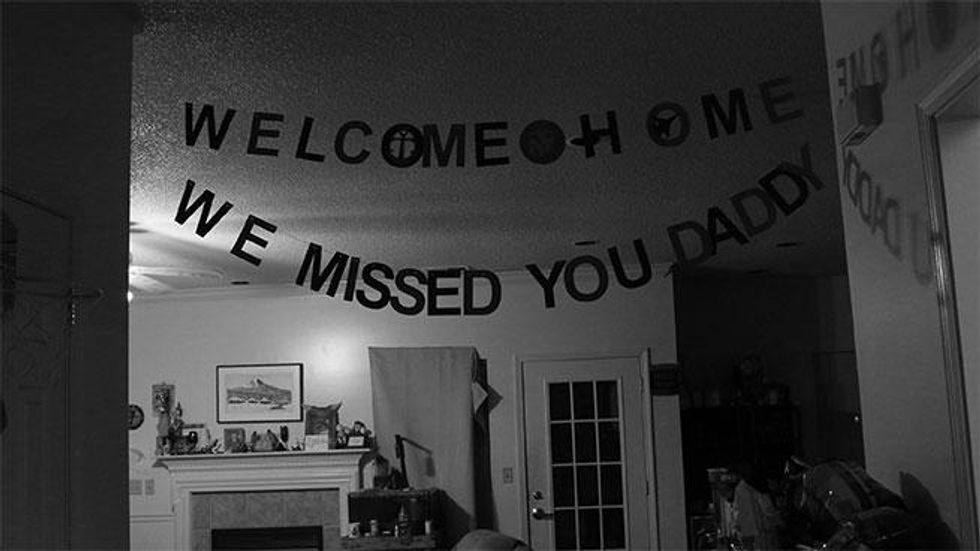
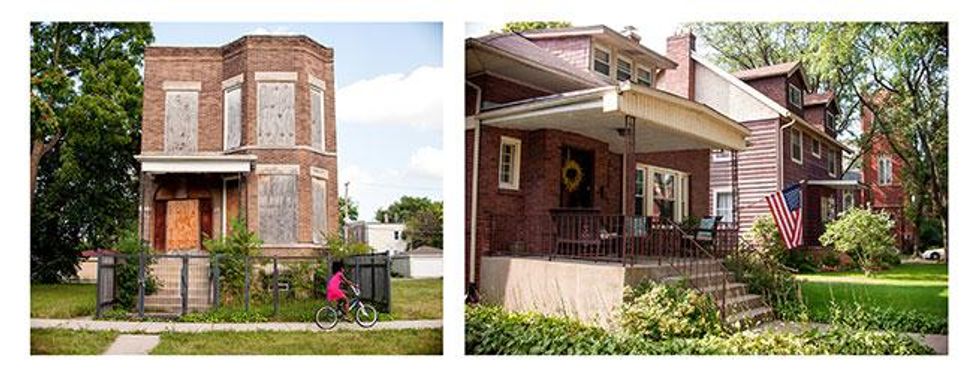
ABOUT THE PROJECT
Tonika's Folded Map(tm) Project connects residents at corresponding addresses on opposite sides of Chicago. She investigates what urban segregation looks like and how it impacts residents. What started as a photographic study quickly evolved into a multimedia exploration with video interviews, inviting audiences to open up dialogue and question how we are all impacted by social, racial, and institutional conditions that segregate us. Tonika's goal is to help people understand how urban environments are structured and to challenge everyone to consider solutions. "I want Folded Map to help us heal and get to know each other so that we can tear down the racist walls that divide us."
ABOUT THE ARTIST
Tonika Lewis Johnson is a visual artist and photographer from Chicago's Englewood neighborhood who explores urban segregation and documents the nuance and richness of the Black community. She is a cofounder of the Resident Association of Greater Englewood (R.A.G.E). In 2019, she was named one of the Field Foundation's Leaders for a New Chicago and was recently appointed a member of the Cultural Advisory Council of the Department of Cultural Affairs and Special Events by the Chicago City Council.
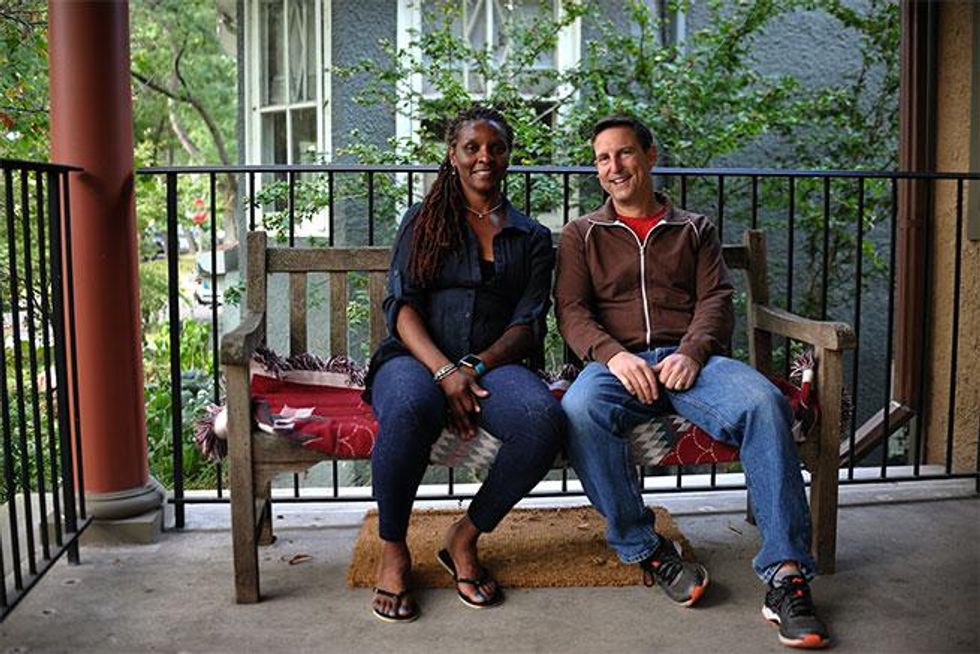

ABOUT THE PROJECT
"Dear Survivor" is a growing visual collection empowering sexual trauma survivors through collaboration and expression of their own narratives. This diptych series seeks to highlight the prevalence of sexual violence and question how we can break this cycle. Conversations in society are happening, but not much has changed.
For example, an American is sexually assaulted every 73 seconds. And yet survivors carry the heavy, painful burden of demanding action and engagement from their family, friends, and community.
This project also involves survivors through a digital workbook with resources, tools, and guided questions. Rosem invites you to connect with their stories and to further participate through our online We, Women platform.
ABOUT THE ARTIST
Rosem Morton is a photographer transitioning from a career as a surgical nurse. Her storytelling focuses on the intimacy of everyday life amid gender, health, and racial adversity. As a National Geographic Explorer, she examines the effects of Philippine colonization, from Indigenous rights to the evolution of the nursing profession. As an advocate for trauma survivors, Rosem shares her own experiences through Wildflower, a widely shared personal project that received the 2020 Visa d'or Award at Visa pour I'image. She is a contributor for NPR, The Washington Post, Reuters, The New York Times, and CNN.


ABOUT THE PROJECT
As a first-generation Black Yemeni immigrant, Muna focuses her work on identity formation and cultural connection. Through sculpture, interactive installations, and photography, Muna explores the complexities and entanglements between individuals and communities. Her work questions: Is culture just a collection of individuals?
Our Family examines how culture shapes the way we see both ourselves and each other amid the backdrop of the United States' history of separating families. Focusing on the Somali community in Minnesota during the Muslim ban, the photos included in this project ask the viewer to examine how culture is shaped when people are separated by thousands of miles.
ABOUT THE ARTIST
Muna Malik is a multidisciplinary artist based in Los Angeles. Her multimedia artwork explores identity formation and works to create cultural awareness, connection, and understanding. Her current work focuses on capturing poetic imagery and narratives of women of color and refugees. Muna's work has been exhibited at Northern Spark Arts Festival, MCAD, ART WORKS Projects Chicago, the University of Minnesota, Band of Vices Gallery LA, Annenberg Space for Photography LA, the International Center for Photography, and in The New York Times and Vogue.
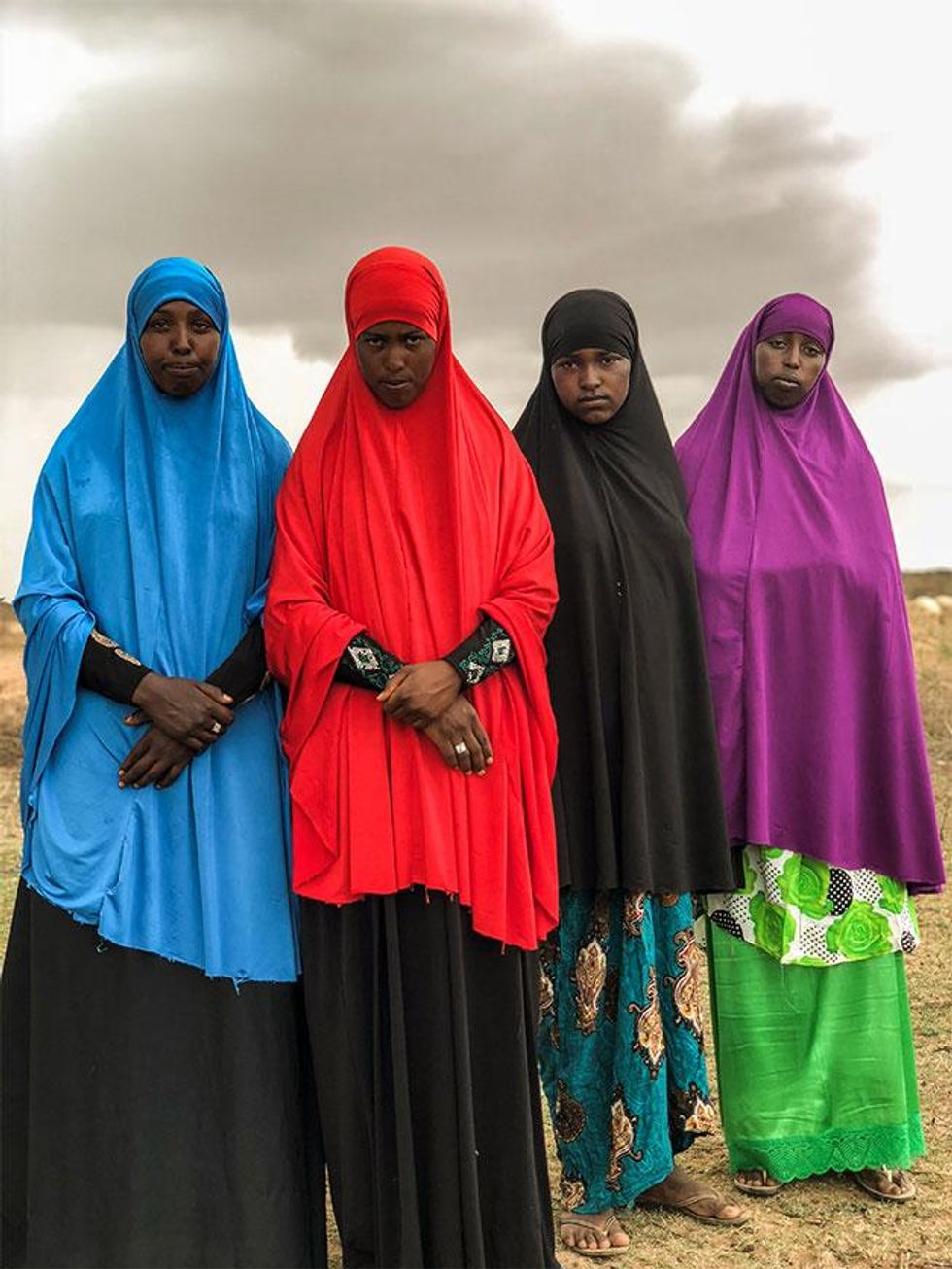
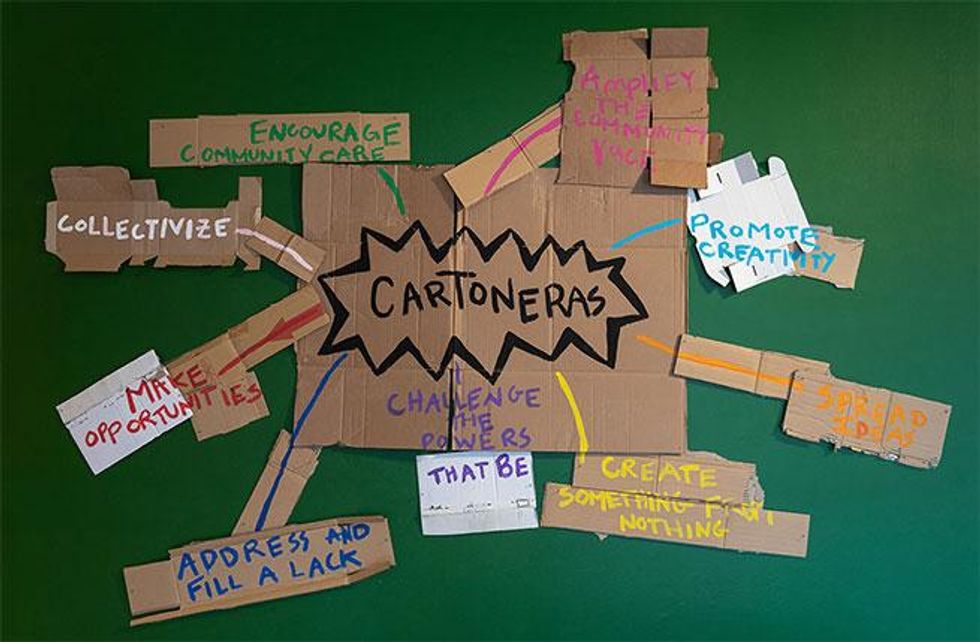
ABOUT THE PROJECT
MI Voz was intended to be a yearlong series of in-person cartonera workshops with Michigan's Latinx community exploring the question "What is my political power?" Participants would answer this question by compiling books of original and sampled materials, creatively engaging their own and others' ideas of political power, social justice, and institutional reform.
Participants' books would then be bound with cardboard covers, alluding to the tradition of Latin American cartoneras, a book form that makes publishing and distribution more accessible. But 2020 and the pandemic had another plan. Despite the unexpected pivots and trajectory changes, MI Voz illustrates the power of reflection in times of adversity.
As you navigate your way through MI Voz and the overall We, Women exhibition, take time to consider the adjustments you've made in your own life in response to this moment. How have you made sense of the pandemic? What's the world you want to see on the other side of this?
ABOUT THE ARTIST
Mayela Rodriguez is a social practice artist reimagining institutional critique as a collective, inclusive, and healing process for Latinx communities. By facilitating the production of community-made collections, Mayela seeks to remind participants of the inherent power of their creative voices in making change. Originally from California, Mayela is currently based in Michigan. Most recently, Mayela has worked on collaborative projects with Latinx communities in Ann Arbor, Mich., and New Cuyama, Calif.

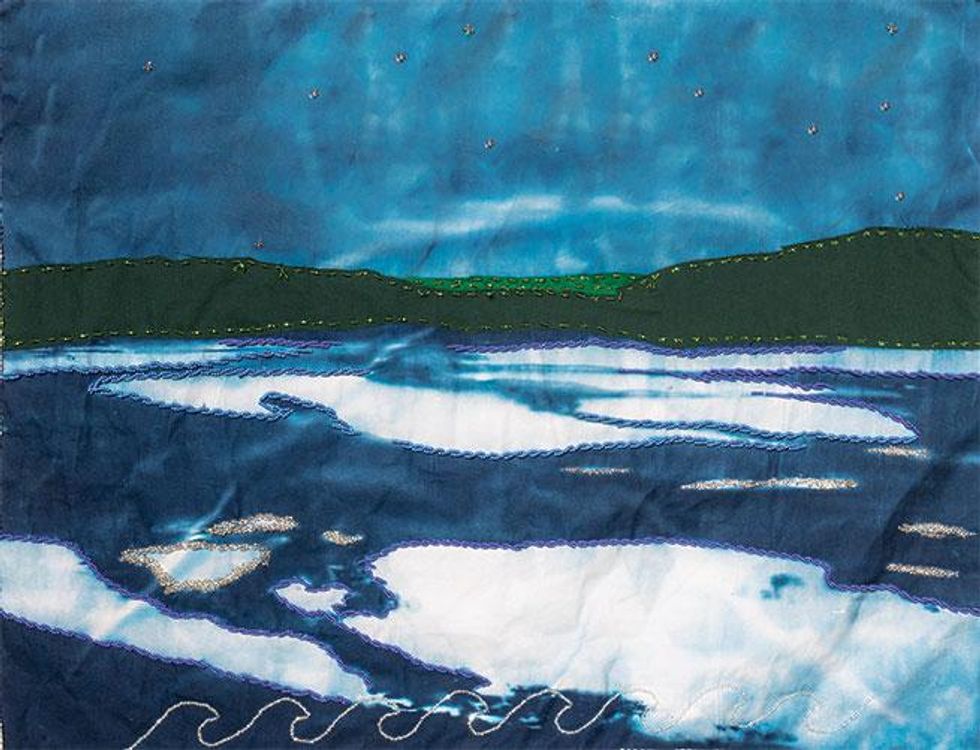
ABOUT THE PROJECT
Karen is collaborating with people from the Seneca Nation to focus on water preservation, education, and community empowerment. We all live because of water, which is a source of healing. It's also a basic human right, it's justice, it's culture, and it needs to be accessible and protected. The Great Lakes represent 20 percent of the world's fresh surface water. However, more than 22 million pounds of plastic pollution end up here every year, including contamination from industrial and nuclear waste. The Allegheny River and the Cattaraugus creek are sacred waters to the Seneca Nation and a source of sustenance for the people and the wildlife. However, pollution concerns, fracking plans, water contamination, forest loss due to invasive insects, and a nuclear waste site threaten the waters and surrounding habitat. Ensuring clean water and protecting it from pollution and waste is one of the fundamental resources we can give to the next generation. In this project, Karen hopes to showcase beauty and resilience while also raising awareness about these critical issues facing our lifeline of water. As a society, we must listen to tribal members in their decision-making and to water keepers on ways to protect, empower, and take action in order to ensure that fresh surface water remains accessible and clean, here in New York and everywhere.
ABOUT THE ARTIST
Growing up on the coast of Ecuador, Karen Miranda-Rivadeneira is an artist, healing arts practitioner, and educator now living in upstate New York. With intersectional theories and earth-based healing informing her practice, Karen's work focuses on memory, geo-poetics, ritual, and storytelling through collaborative processes and personal narratives. Seh was ominated for Prix Pictet in 2019, and her work has been exhibited in the National Portrait Gallery, the United Nations, Aperture Foundation, and the Photographic Museum of Humanity, among others. She has been an artist in residence in the United States, France, and Italy and has taught at CalArts, SVA, ICP, and CUNY. Karen has received multiple awards and fellowships and her first monograph, Other Stories, was published in 2017 by Autograph ABP.
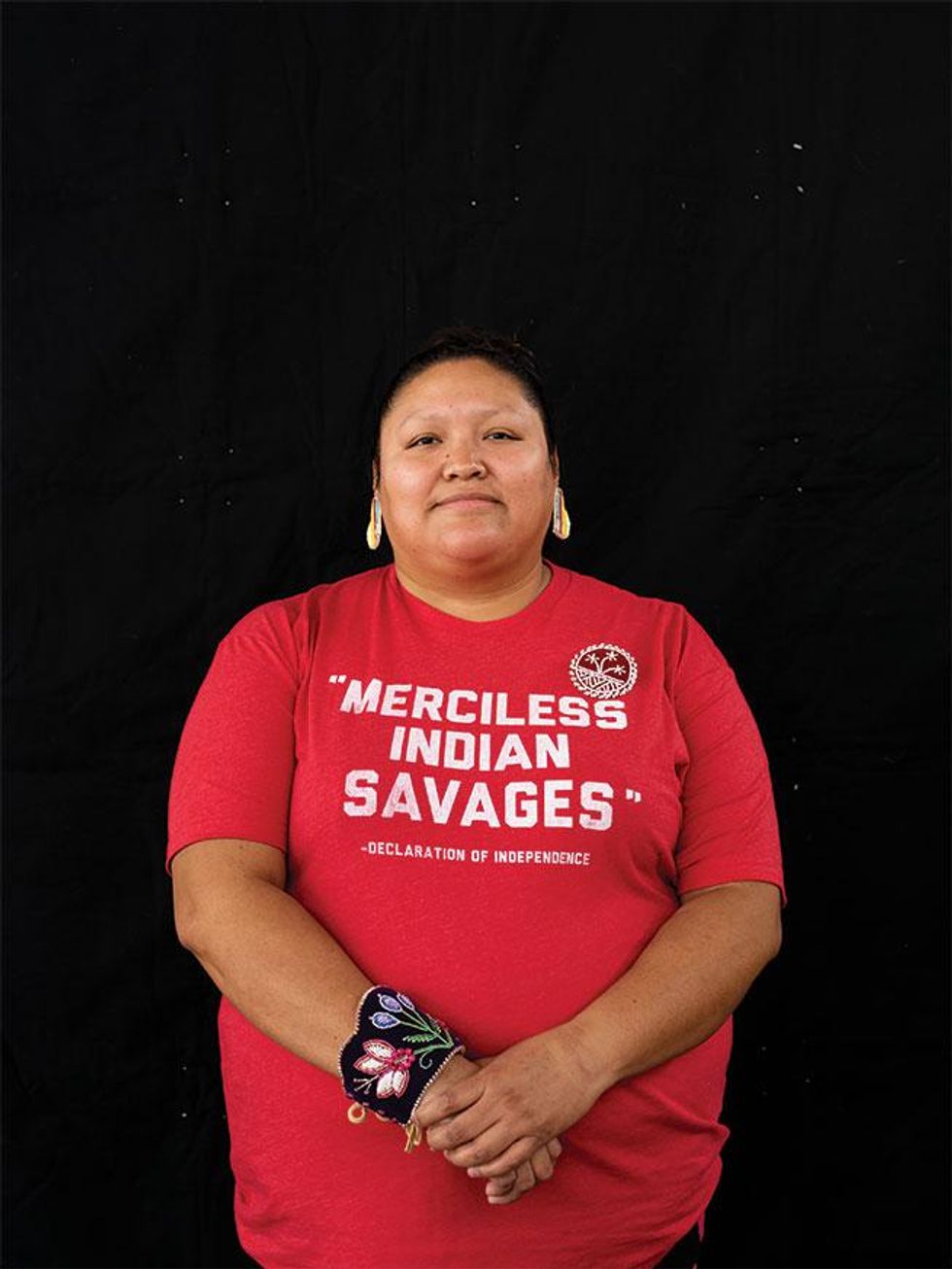
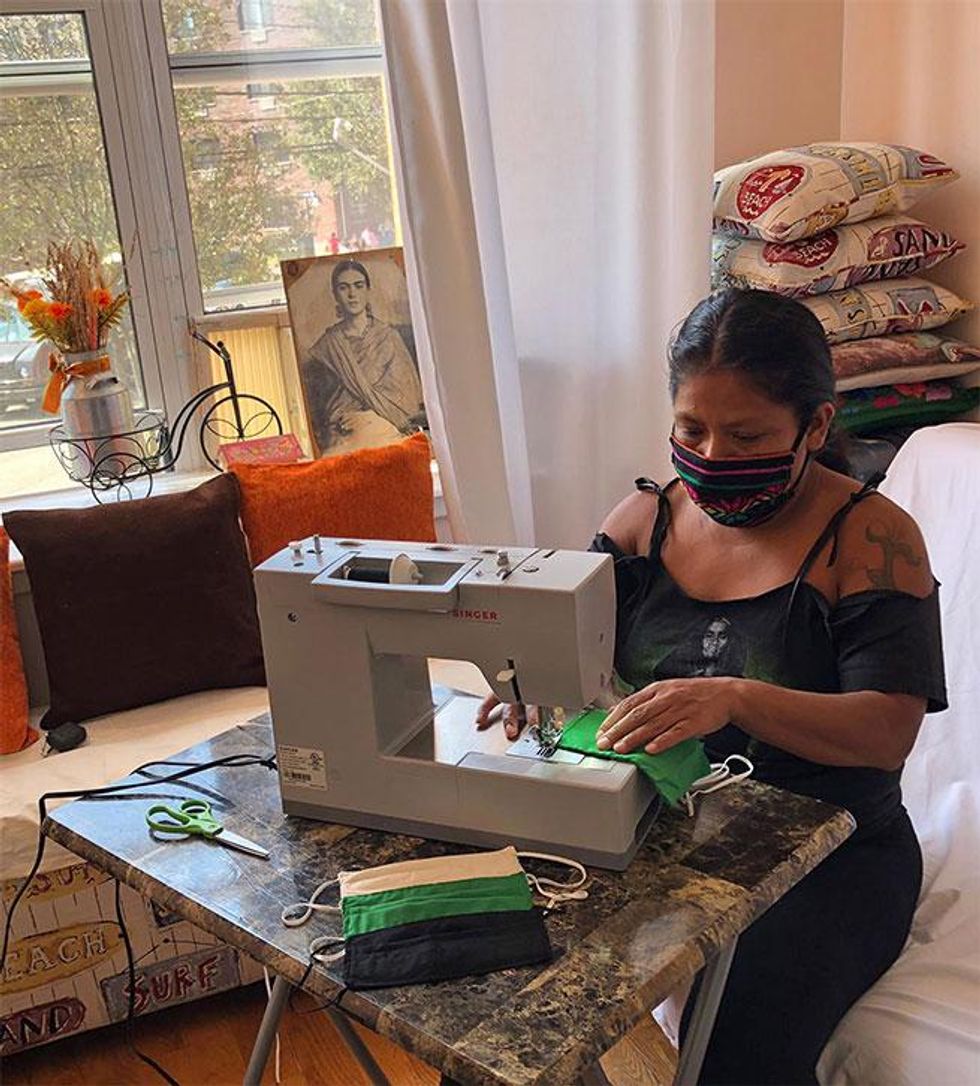
ABOUT THE PROJECT
The Workers Studio is a series of engagements and exchanges between Sol Aramendi and immigrant community members who document their daily lives, their labor, and mutual aid circles. Though immigrants hold jobs crucial to the positive growth of the economy, they've been disproportionately affected by the COVID-19 pandemic. Despite that, the extractivist economy hasn't deterred these women in creating alternative care systems for themselves and their community.
The photos included here were created by Maria Abeja, Veronica Ramirez, Elizabeth Tolalba, Araceli Dominguez, Valeria Reyes, and Sol Aramendi. Illustrations by Sara Vera. Collaborators include La Colmena Community Job Center, Mujeres en Movimiento, Brightly Cooperative, and Apple Eco Cleaning Cooperative.
ABOUT THE ARTIST
Sol Aramendi is a socially engaged artist working with immigrant communities throughout New York City. Her participatory practice promotes change around fairer labor and immigration conditions. She is the founder of Project Luz, a nomadic program that uses photography and art as a tool of empowerment. She is a 2018 Open Society Foundations Moving Walls fellow and also received fellowships from A Blade of Grass (2015), the Ford Foundation (2018), and NALAC. (2018).
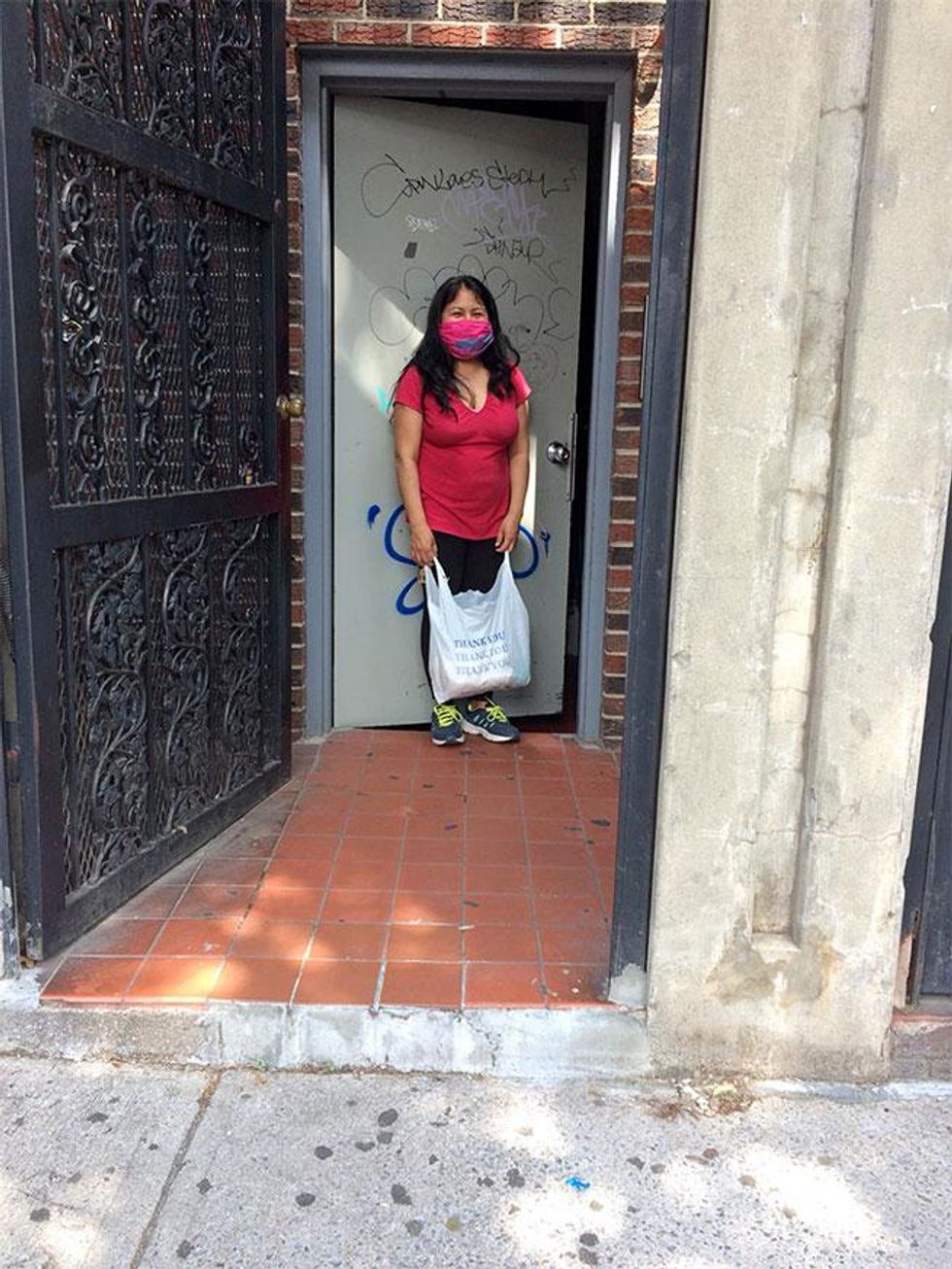
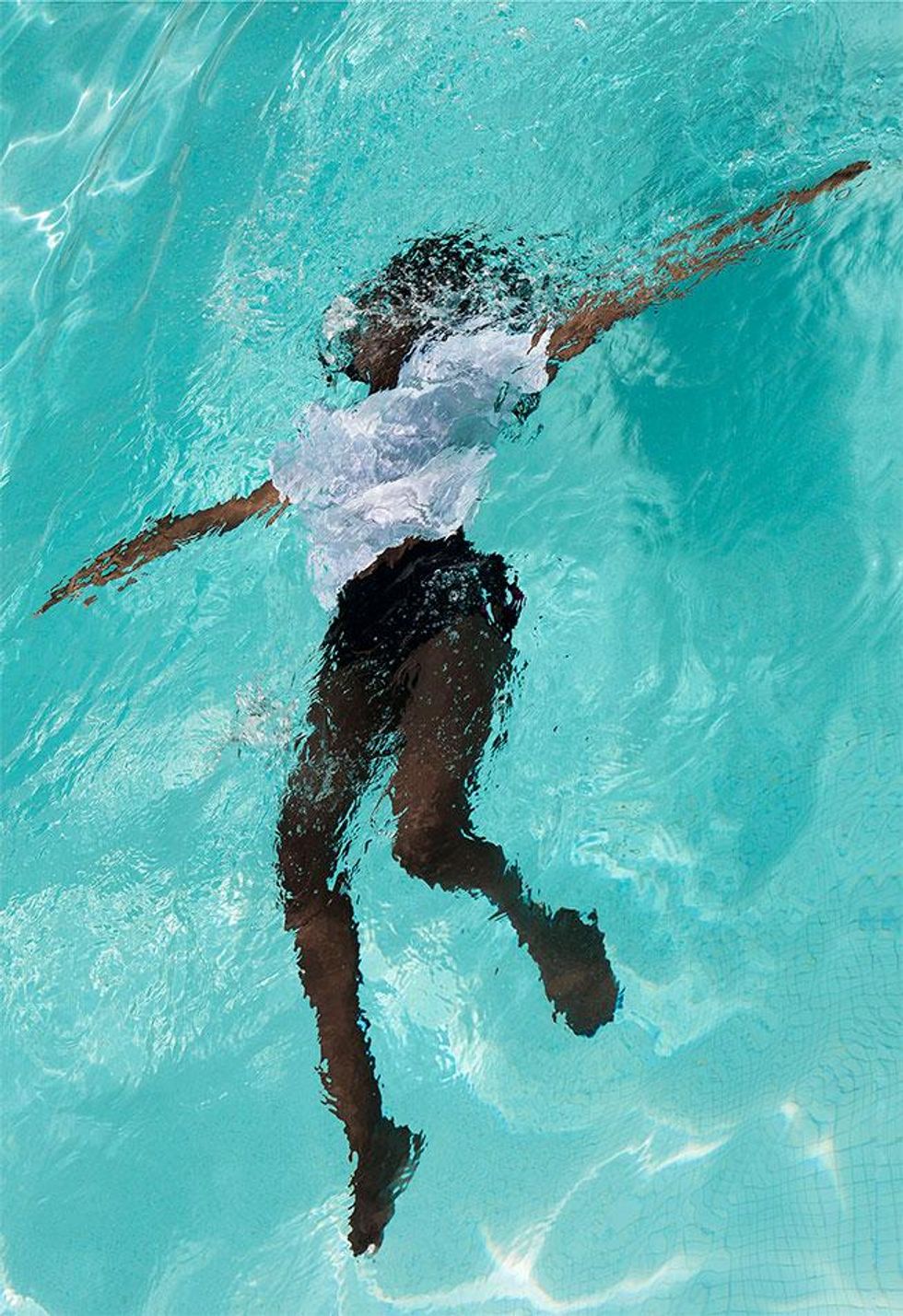
ABOUT THE PROJECT
Up for Air is a testimony, inviting spiritual and non-spiritual people alike to breathe in the narrative of how queer, Black bodies move within religious spaces. In Black churches, queerness is casually present but rarely addressed or spoken of as it's considered a threat to both masculinity and femininity.
This specific subject of work prompts dialogue about the nonconversation that should be held for and by queer people of color in traditional places of worship. Through sound, color, and light, Ericka aims to create a visceral story that offers nonnormative perspectives on the dynamics of the Black, religious, and spiritual experience.
The Sunday morning ritual of preparing one's presence for engagement within a religious setting holds similar importance to the ritual of being baptized, partaking in communion, or sharing testimony with a chosen religious community. The word "queer" in this sentiment is not limited to only gender or sexuality. "Queer" should also be acknowledged in its original origin -- out of the ordinary, unusual.
In the deep waters of wonder, one may be born again or may be stuck right beneath the surface. These visual truths speak on the difficulties of embracing an identity that's often overshadowed while expanding on memory, beauty, and tradition.
ABOUT THE ARTIST
Ericka Jones-Craven is an Atlanta-based photographer and visual content creator who holds a BFA in art photography and a BA in religious studies from Syracuse University. She recently attained her MA in arts politics at NYU and is the art director for the journal Public Art Dialogue.
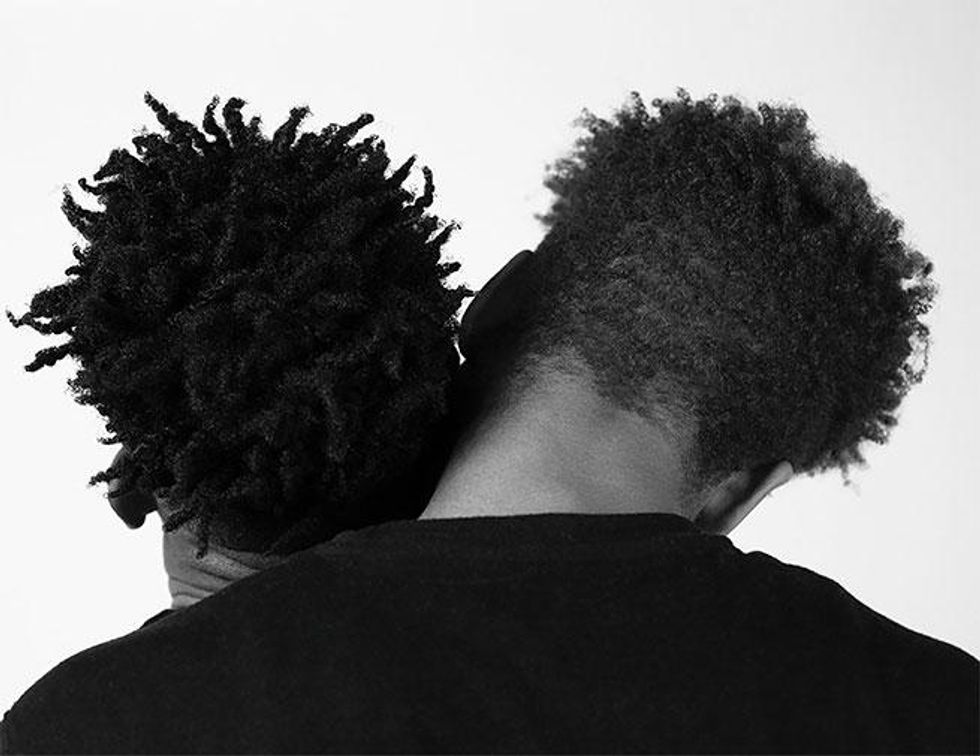
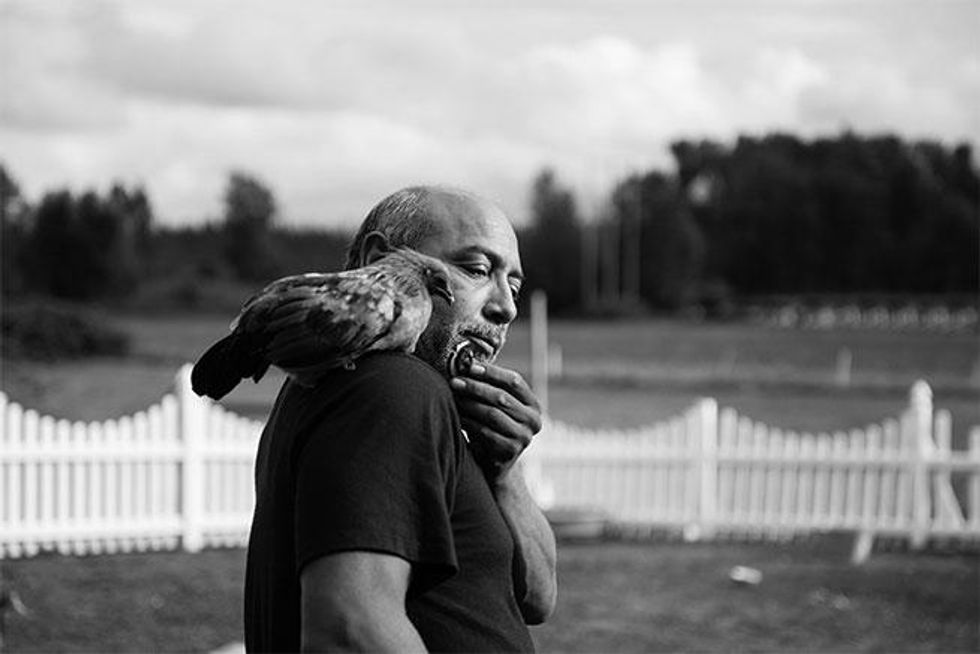
ABOUT THE PROJECT
In partnership with formerly incarcerated individuals, Living With Conviction: Sentenced to Debt for Life in Washington State confronts how Washington courts have been sentencing people not only to prison but also to a lifetime of debt. The project leverages multimedia storytelling and community conversations to raise awareness about and advocate for an end to crippling court-imposed costs, fees, fines, and restitution, a.k.a "legal financial obligations." Known as LFOs, some of these fees begin accruing interest at a rate of 12 percent at the time of sentencing and can increase up to 50 percent in interest. This policy criminalizes poverty, shackling low-income communities and communities of color to the criminal justice system for life. Living With Conviction goes beyond polarizing headlines and statistics, highlighting the injustice of this system by sharing stories of our common humanity.
ABOUT THE ARTIST
Deborah Espinosa is an artist and attorney, born and raised in Southern California to a Mexican father and Norwegian mother. Currently living in Seattle, she combines her legal and multimedia storytelling skills to advocate for racial and economic justice. She believes that this combination of media is one of the most compelling and impactful advocacy tools for reform of unjust law.
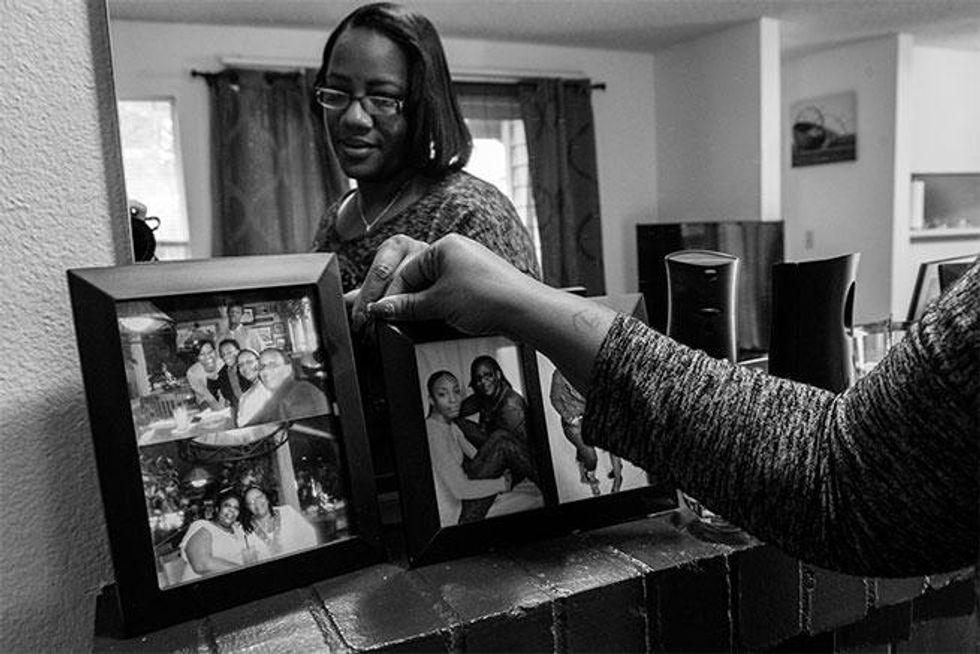
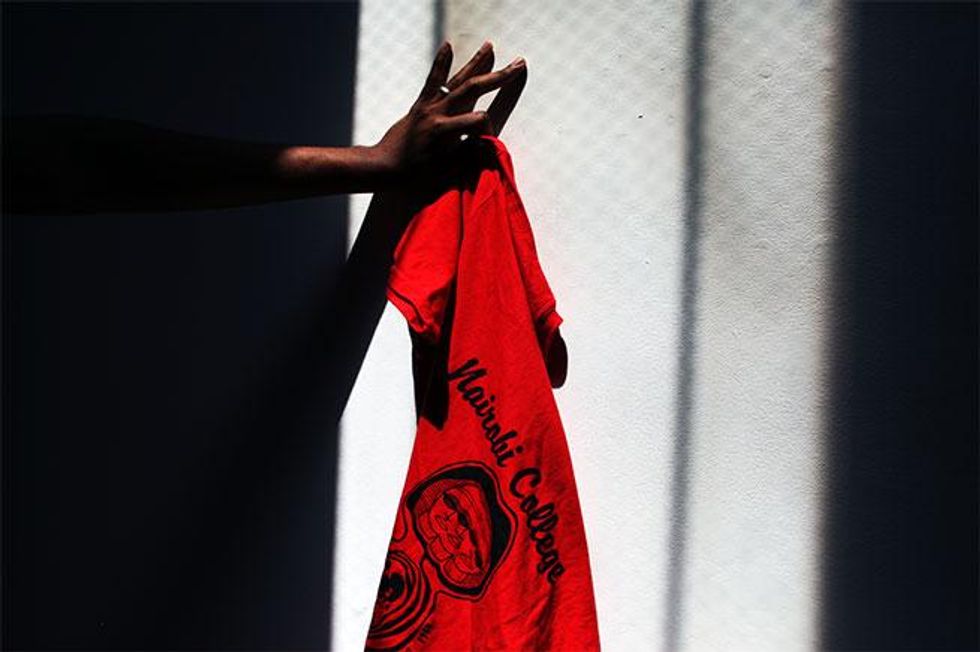
ABOUT THE PROJECT
Expanding Local Histories seeks to build an archive of East Palo Alto, Calif.'s radical education history from the late 1960s through the early 1980s to situate this local history within a larger national movement of Black institution-building and self-determination. Alongside this archival effort is an interest in considering how this specific moment in educational history can provide frameworks, questions, and strategies for reimagining our contemporary schooling landscape.
Kameelah is returning to her hometown to explore how this effort and other archival efforts in the city allow us to understand how community change caused by gentrification and other factors impact the preservation of local histories. She is working with local residents to create a digital archive of East Palo Alto's history, which includes the creation of a school system.
In this process, she has learned about the lineage of archival efforts in East Palo Alto, the wide dispersal of archival materials across institutional and personal collections, and the ethics of narrating a city's history.
ABOUT THE ARTIST
Kameelah Janan Rasheed is a learner from East Palo Alto, Calif., based in Brooklyn, N.Y. Engaging primarily with text, Kameelah works on the page, on walls, and in public spaces to create associative arrangements of letters and words that invite embodied and iterative reading processes. Rasheed is invested in Black storytelling technologies that ask us to consider ways of [un]learning that are interdisciplinary, interspecies, and interstellar. She is the author of two artist's books, An Alphabetical Accumulation of Approximate Observations (Endless Editions, 2019) and No New Theories (Printed Matter, 2019). Her work has been exhibited nationally and internationally, and she is the recipient of numerous awards and honors, including a 2021 Guggenheim Fellowship.

ABOUT THE PROJECT
Dear Newtok is an audio/visual advice "column" produced by residents of the Yukon-Kuskokwim Delta in Southwest Alaska, one of the first regions in the U.S. to experience forced relocation due to the climate crisis. This chapter of the project focuses on the Yup'ik village of Newtok where the shoreline is rapidly eroding as a result of melting permafrost and an increase in storm surges. The community is relocating to the newly constructed village of Mertarvik, nine miles away. Using words and images, Dear Newtok offers advice and insight on adapting to a changing world.
ABOUT THE ARTIST
Katie Basile is a documentary photographer and filmmaker whose work explores adaptation and resilience in Southwest Alaska. She began her career as a teaching artist and has more than one decade of experience collaborating on multimedia stories with rural Alaskan youth. Katie is a Rasmuson Foundation Individual Artist Awardee and the co-recipient of an Edward R. Murrow Award for Excellence in Video with KYUK Public Media. She recently directed the award-winning short film "To Keep as One" in collaboration with the Newtok Village Council that premiered at the 2020 Big Sky Film Festival. Katie grew up in Bethel, Alaska, where she lives with her husband and two sons.
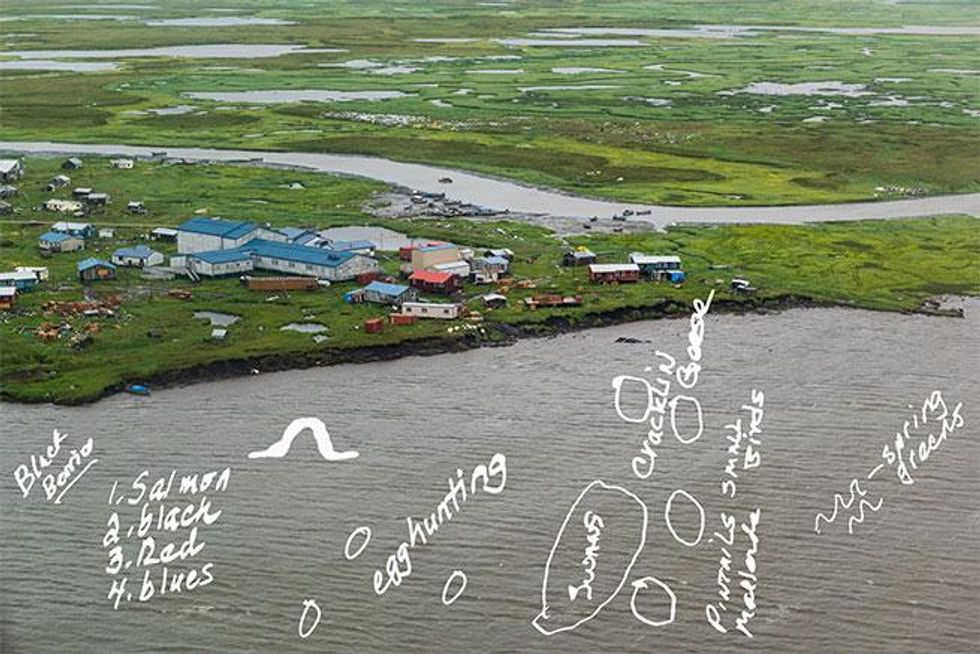
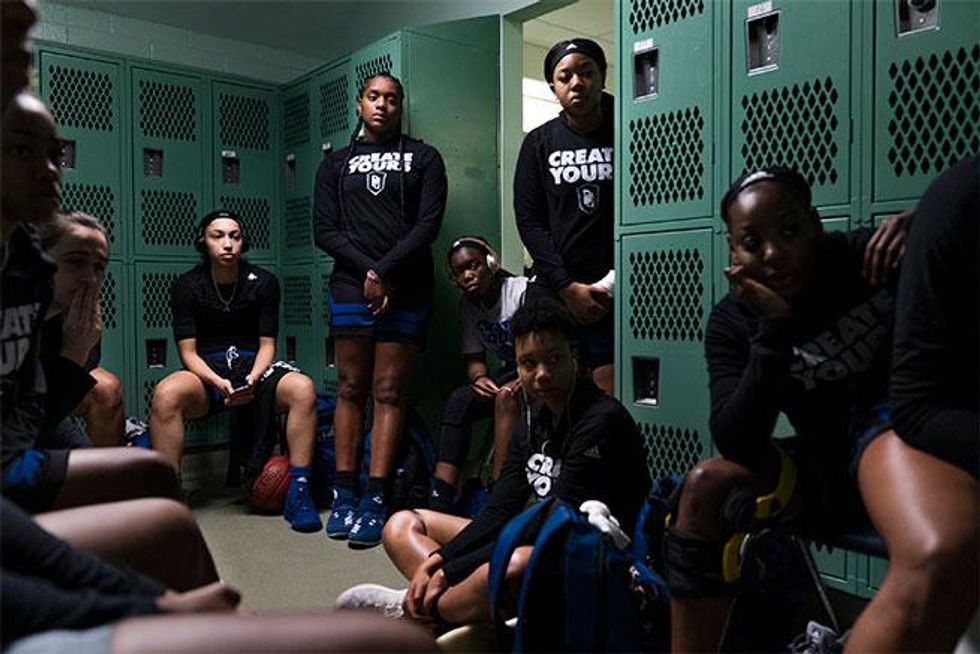
ABOUT THE PROJECT
She laces up her sneakers, a cross hangs around her neck. Her blue warmup shirt reads "Create Yours" in bold, white letters. Headphones in, she grabs a basketball off the rack, the sound of each dribble echoing off the walls as she steps closer to the court. Without skipping a beat, she jabs left, squares up, shoots, swoosh. The buzzer rings. After Coach Rome reviews the plays, the team gathers in the center of the locker room: arms up, they pray.
In 1973, after the passage of Title IX, Mary Dixon Teamer founded Dillard University's Lady Bleu Devils in New Orleans. Nearly 50 years later, Mary's granddaughter, Ashley Teamer, along with friend and collaborator Annie Flanagan, have documented the present-day Lady Bleu Devils team over the course of two years. They've witnessed them become the 2018 Gulf Coast Athletic Conference champions as well as how their deep interconnections and unwavering community grew over the seasons.
Through a billboard series in New Orleans coming this year, their project inserts Black women in the landscape of the city, highlighting the significance of the team and the relationships and complexities of each player in their pursuit of athletic and academic excellence at a historically Black university.
ABOUT THE ARTISTS
ARTIST - Annie Flanagan
Annie Flanagan is a photographer and journalist based in New Orleans. Their work is rooted in the documentary format and focuses on gender, sexuality, and the environment throughout the United States. Annie has been recognized and supported by organizations including the Alexia Foundation, POYi, and New Orleans Photo Alliance. Their clients include The Washington Post, The Players' Tribune, AARP, Mother Jones, Neon Magazine, CNN, The New York Times, and Smithsonian Magazine.
WWW.ANNIEFLANAGAN.COM * @ANNIEFLANAGAN
ARTIST - Ashley Teamer
Ashley Teamer is an artist from New Orleans. Her multimedia artwork explores the nuances of Black femininity through painting, collage, and video. Ashley's work has most recently been exhibited at Siena Heights University, Ogden Museum of Southern Art, Los Angeles LGBT Center, and Echo Park Film Center.
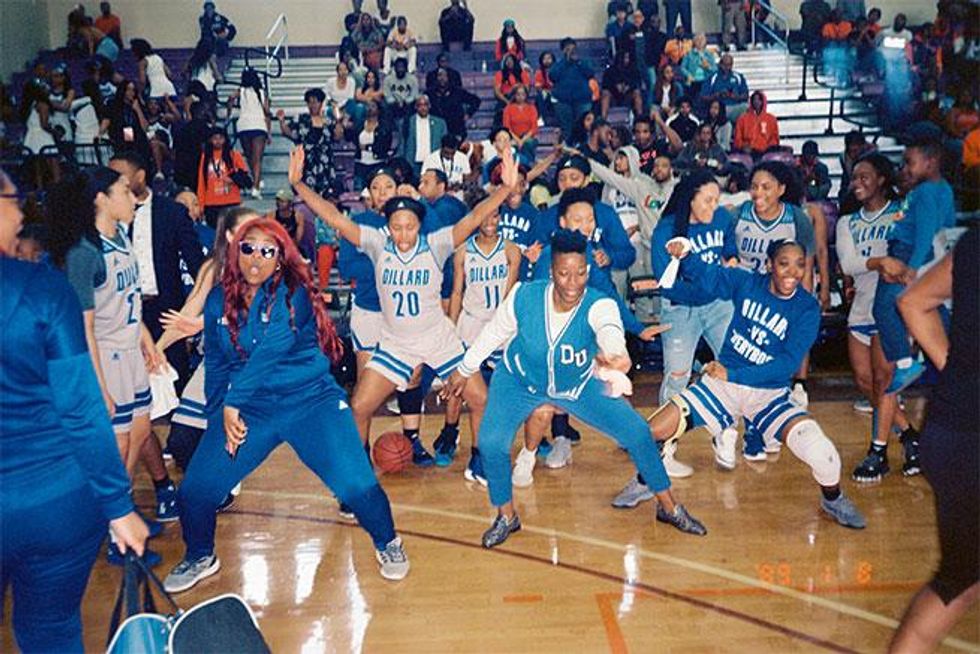
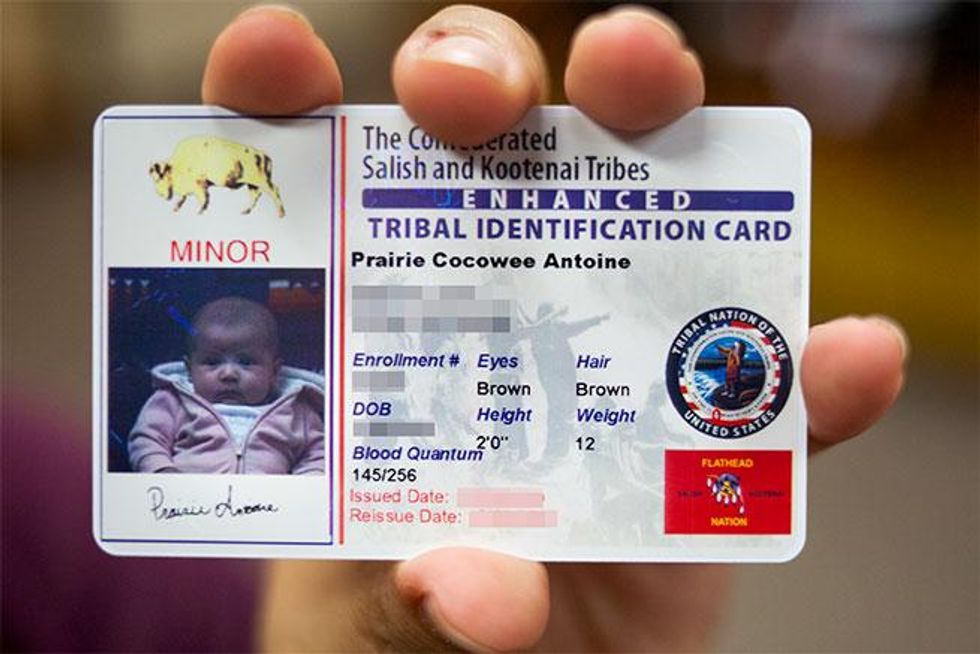
ABOUT THE PROJECT
In the universal struggle to find a life partner, Reservation Mathematics: Navigating Love in Native America looks at how generations of young Native Americans have faced a burden put upon them long before they were born. In 1934, the U.S. Congress passed the Indian Reorganization Act, a law established to bolster tribal authority on their own lands.
It dictated that individuals must have a certain fraction of Indian blood, or blood quantum, to enroll as a member of that tribe. Blood quantum is determined by the amount of Indian blood of a person's ancestors. For example, if someone had one parent who was full-blooded and one who was non-Native, that person would have a blood quantum of 1/2.
Native Americans who want their children to be legal, enrolled tribal members must choose a partner with enough of their tribe's blood. This system is unsustainable -- if these requirements are maintained, tribes will cease to exist.
ABOUT THE ARTIST
Tailyr Irvine is a photojournalist from the Flathead Reservation in Montana. Her work focuses on challenging stereotypical narratives with photos that provide deeper representation of the lives and the complex issues within the diverse communities that make up Native America. Tailyr worked at The Dallas Morning News and Tampa Bay Times before beginning her career as an independent journalist.
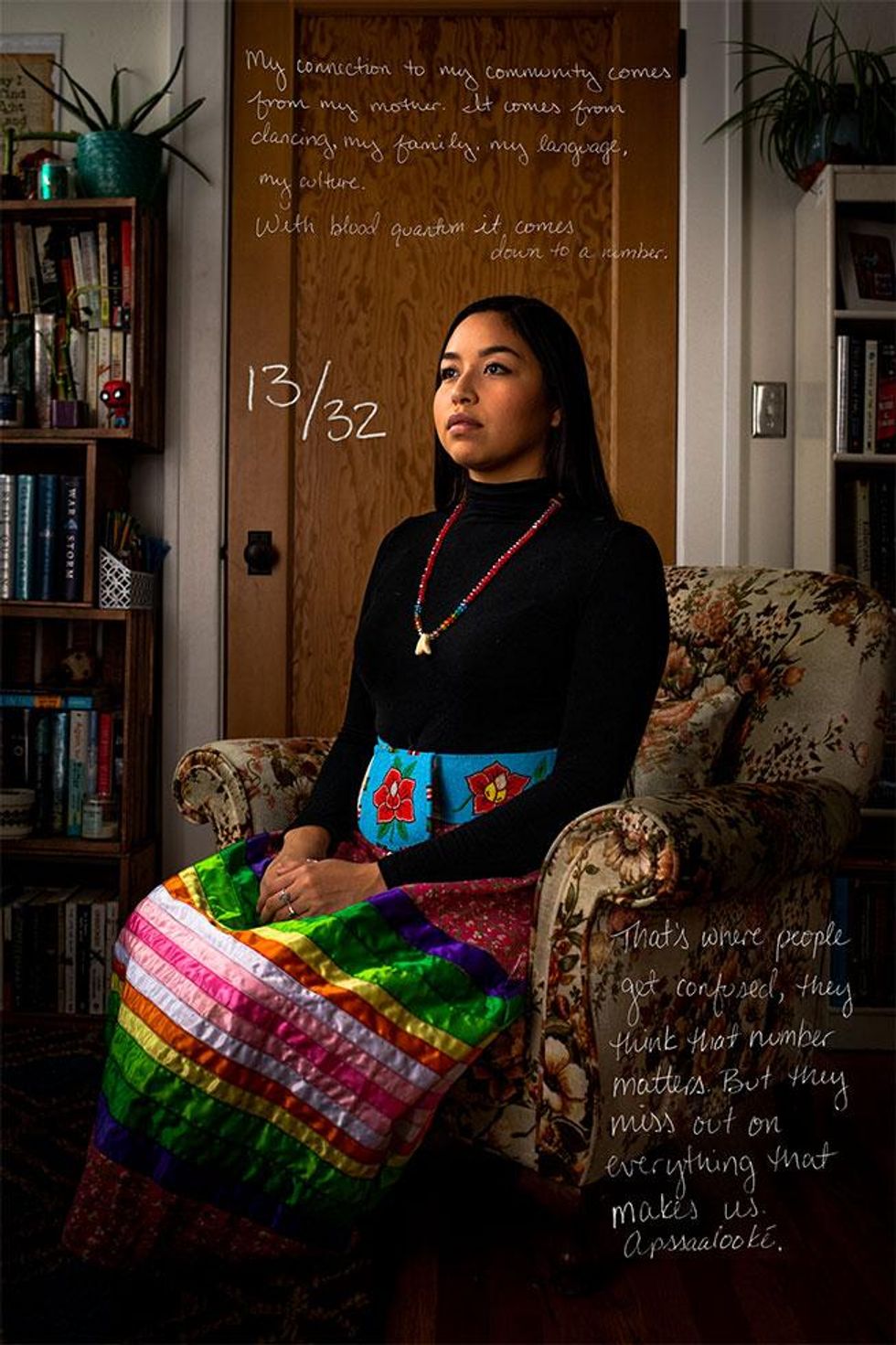

ABOUT THE PROJECT
Welcome to Intipuca City is a collaborative transmedia project that uses images, drawings, and words to reconfigure the imagery of Salvadoran migration to Washington, D.C., Maryland, and Virginia. Through past and present stories, this project seeks to change the image of Central American migrants stigmatized by hate speech and to show the complexity of trans-national identities through their life stories. For We, Women, they created a series of workshops and installed work in businesses run by the Salvadoran community in D.C. to honor people's pride of being a migrant. Additionally, they'll produce a zine about the process, dialogue, and encounters between the Salvadoran community and non-Latino communities. The artists seek to give back to and maintain a dialogue with this community that has shared their stories with them since 2017.
ABOUT THE ARTISTS
Koral Carballo is a Mexican photographer who tells stories related to identity, violence, and territory while dissolving frontiers between photojournalism and the visual arts. She is the recipient of the Catchlight Fellowship (2021), POY LATAM's second-place Nuestra Mirada Award (2021), the Woman Photograph and Getty Images grant (2019), an Open Society Foundations Moving Walls 25 Fellowship (2018), and received first place in the Latin American Photography Colloquium portfolio review (2017). She organizes the festival of documentary and journalistic photography Mirar Distinto in Mexico, which she founded in 2014. She is currently part of the collective Ruda.
WWW.KORALCARBALLO.COM * @KORALCARBALLO
Anita Pouchard Serra is a visual storyteller, photojournalist, and educator based in Buenos Aires. Her transdisciplinary practice explores topics of personal significance such as migration, identity, territory, and empowerment using tools from drawings to performance. Her work has received the support of the Pulitzer Center, National Geographic Society, the International Women's Media Foundation, and Open Society Foundation's Moving Walls 25. Her work has been published and exhibited internationally. Since 2014, she has taught photojournalism and visual storytelling.
WWW.ANITAPOUCHARDSERRA.COM * @ANITAPOUCHARDSERRA
Jessica Avalos is a Salvadoran journalist whose writing focuses on access to justice, human rights, migration, and victims of violence. She received a fellowship from the Columbia University School of Journalism (2017), a grant from the Fundacion Nuevo Periodismo Iberoamericano (2009), and a grant from the International Women's Media Foundation (2016). She is a 2018 Open Society Foundations Moving Walls 25 fellow.
